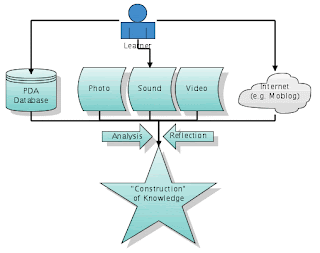

Pedagogies based on constructivism
In fact, there are many pedagogies that leverage constructivist theory. Most approaches that have grown from constructivism suggest that learning is accomplished best using a hands-on approach. Learners learn by experimentation, and not by being told what will happen. They are left to make their own inferences, discoveries and conclusions. It also emphasizes that learning is not an "all or nothing" process but that students learn the new information that is presented to them by building upon knowledge that they already possess. It is therefore important that teachers constantly assess the knowledge their students have gained to make sure that the students perceptions of the new knowledge are what the teacher had intended. Teachers will find that since the students build upon already existing knowledge, when they are called upon to retrieve the new information, they may make errors. It is known as reconstruction error when we fill in the gaps of our understanding with logical, though incorrect, thoughts. Teachers need to catch and try to correct these errors, though it is inevitable that some reconstruction error will continue to occur because of our innate retrieval limitations.
In most pedagogies based on constructivism, the teacher's role is not only to observe and assess but to also engage with the students while they are completing activities, wondering aloud and posing questions to the students for promotion of reasoning (DeVries et al., 2002). (ex: I wonder why the water does not spill over the edge of the full cup?) Teachers also intervene when there are conflicts that arise; however, they simply facilitate the students' resolutions and self-regulation, with an emphasis on the conflict being the students' and that they must figure things out for themselves. For example, promotion of literacy is accomplished by integrating the need to read and write throughout individual activities within print-rich classrooms. The teacher, after reading a story, encourages the students to write or draw stories of their own, or by having the students reenact a story that they may know well, both activities encourage the students to conceive themselves as reader and writers.
In fact, there are many pedagogies that leverage constructivist theory. Most approaches that have grown from constructivism suggest that learning is accomplished best using a hands-on approach. Learners learn by experimentation, and not by being told what will happen. They are left to make their own inferences, discoveries and conclusions. It also emphasizes that learning is not an "all or nothing" process but that students learn the new information that is presented to them by building upon knowledge that they already possess. It is therefore important that teachers constantly assess the knowledge their students have gained to make sure that the students perceptions of the new knowledge are what the teacher had intended. Teachers will find that since the students build upon already existing knowledge, when they are called upon to retrieve the new information, they may make errors. It is known as reconstruction error when we fill in the gaps of our understanding with logical, though incorrect, thoughts. Teachers need to catch and try to correct these errors, though it is inevitable that some reconstruction error will continue to occur because of our innate retrieval limitations.
In most pedagogies based on constructivism, the teacher's role is not only to observe and assess but to also engage with the students while they are completing activities, wondering aloud and posing questions to the students for promotion of reasoning (DeVries et al., 2002). (ex: I wonder why the water does not spill over the edge of the full cup?) Teachers also intervene when there are conflicts that arise; however, they simply facilitate the students' resolutions and self-regulation, with an emphasis on the conflict being the students' and that they must figure things out for themselves. For example, promotion of literacy is accomplished by integrating the need to read and write throughout individual activities within print-rich classrooms. The teacher, after reading a story, encourages the students to write or draw stories of their own, or by having the students reenact a story that they may know well, both activities encourage the students to conceive themselves as reader and writers.
No comments:
Post a Comment